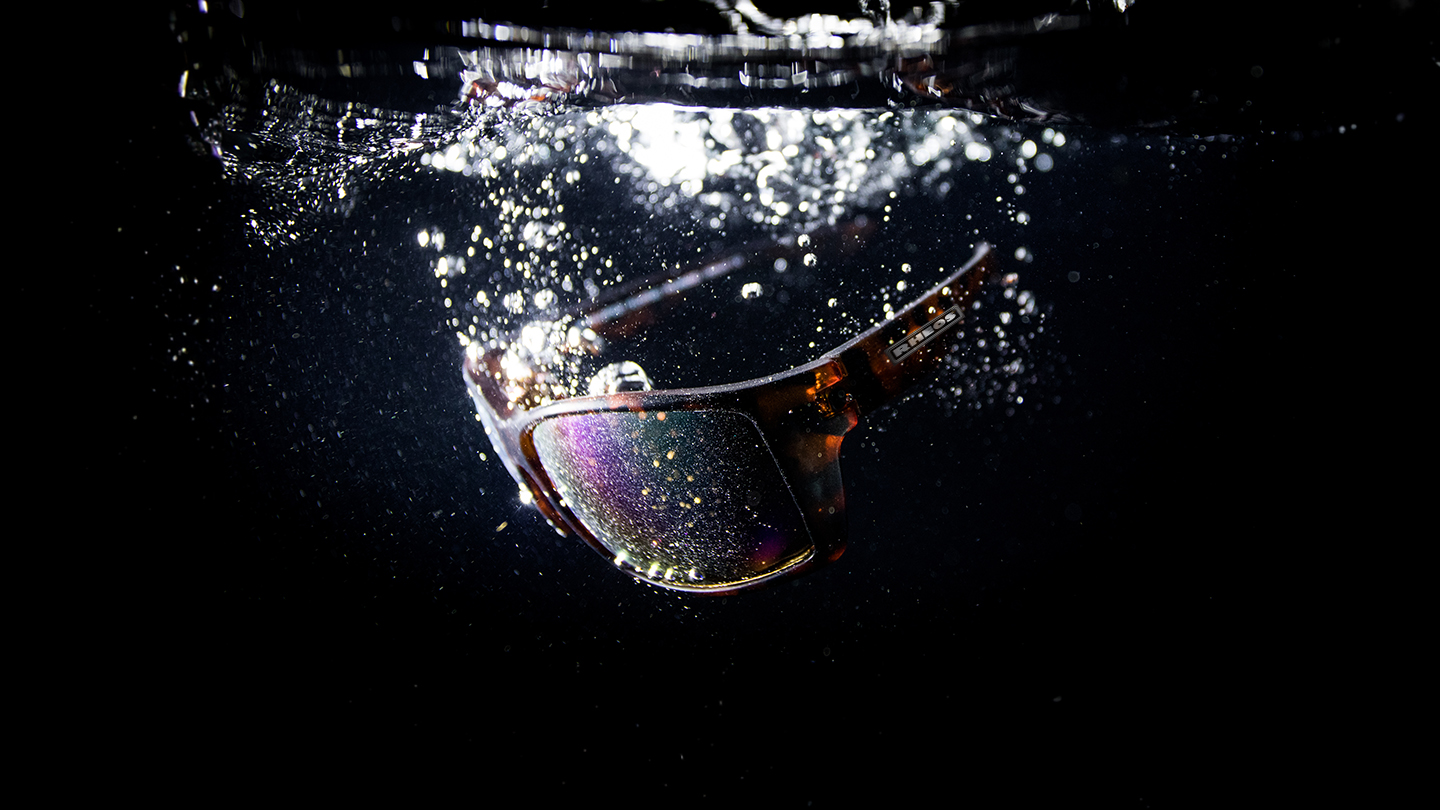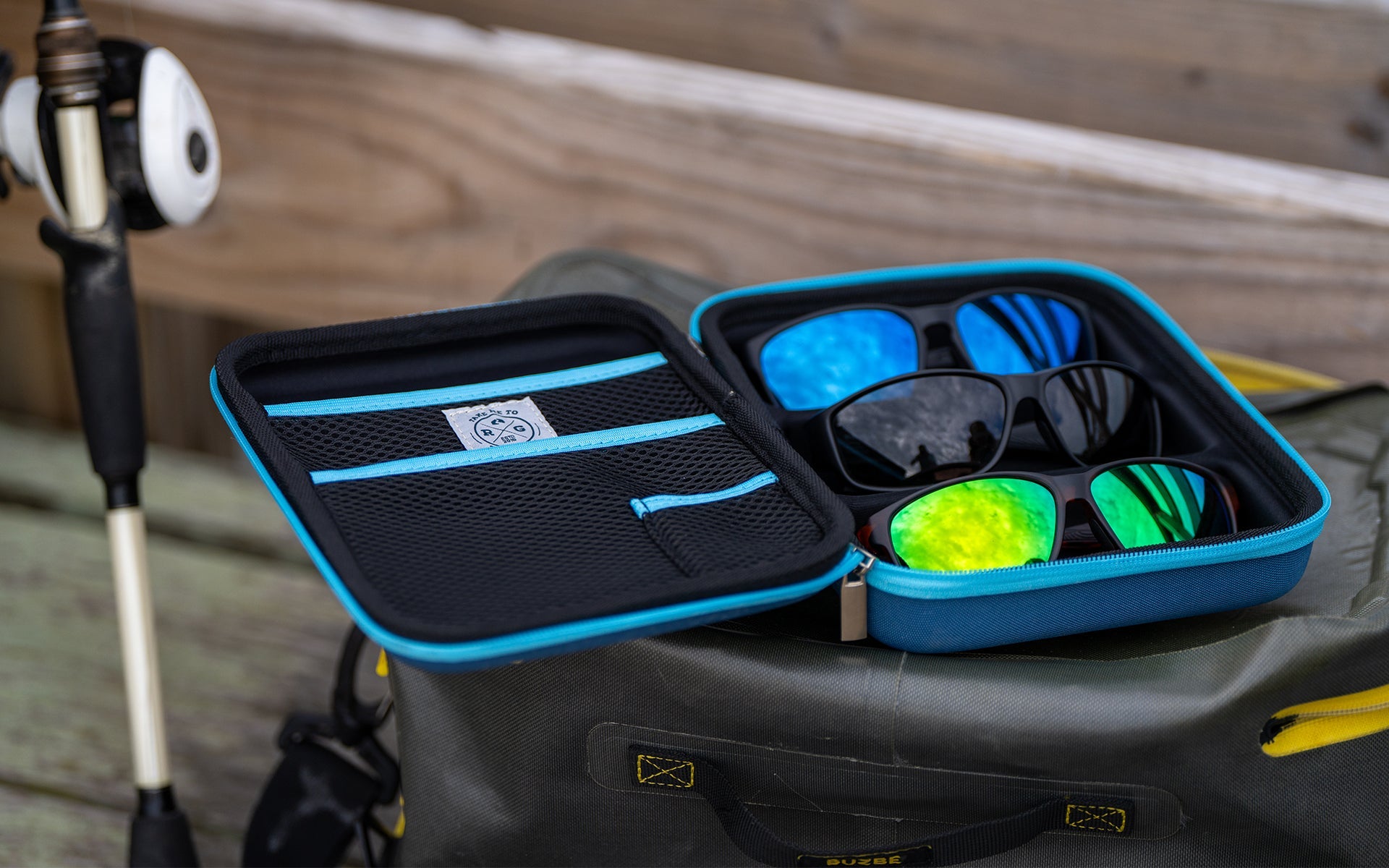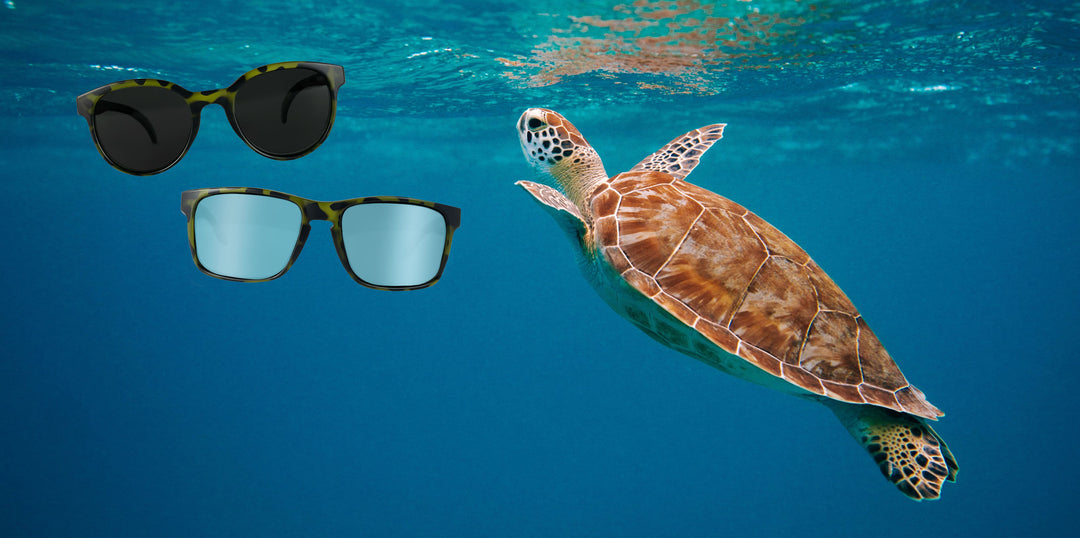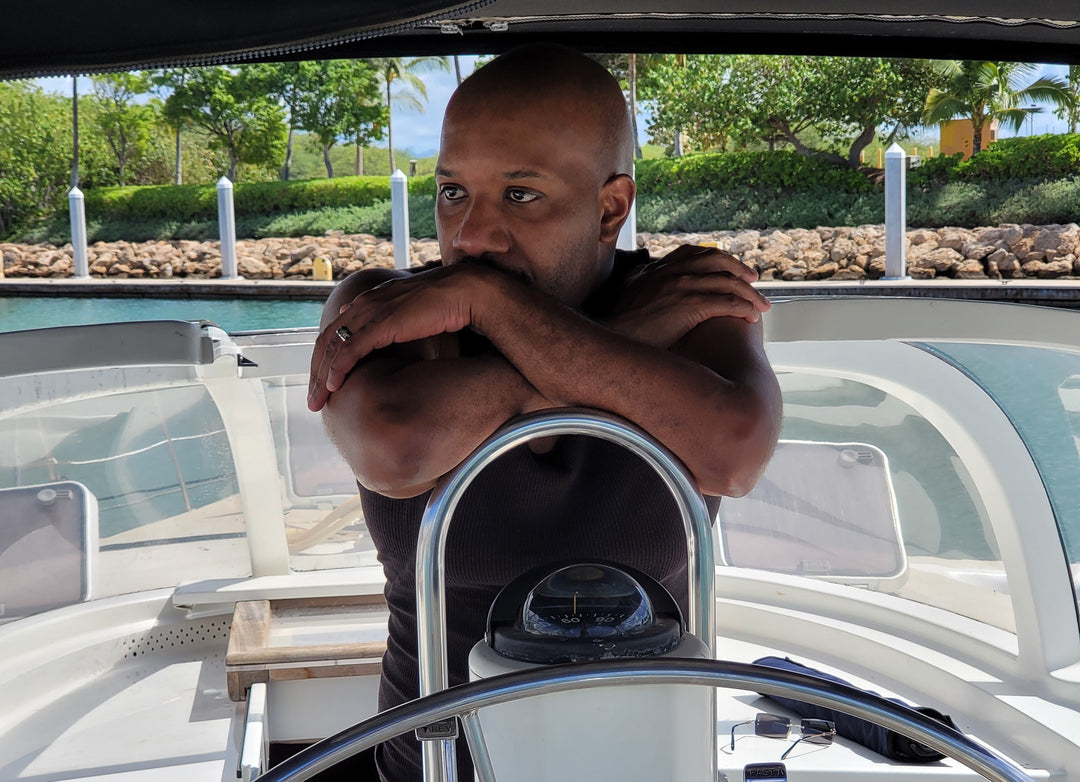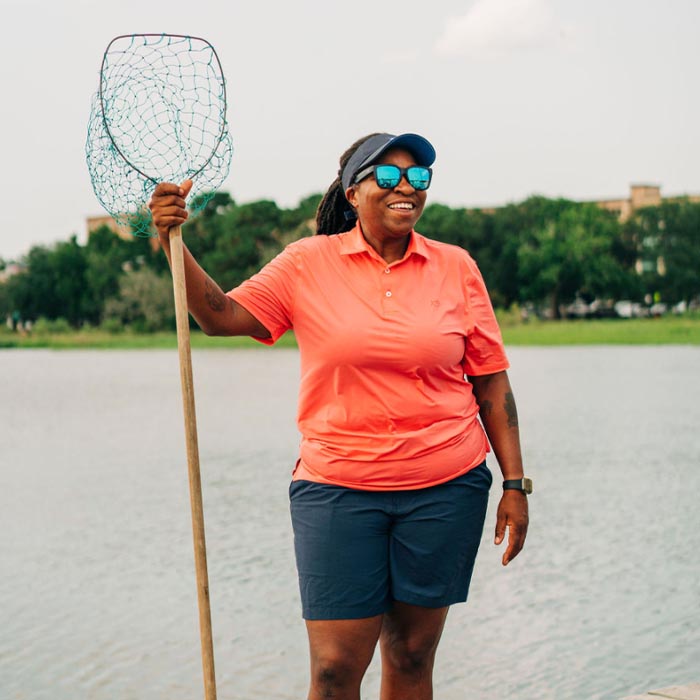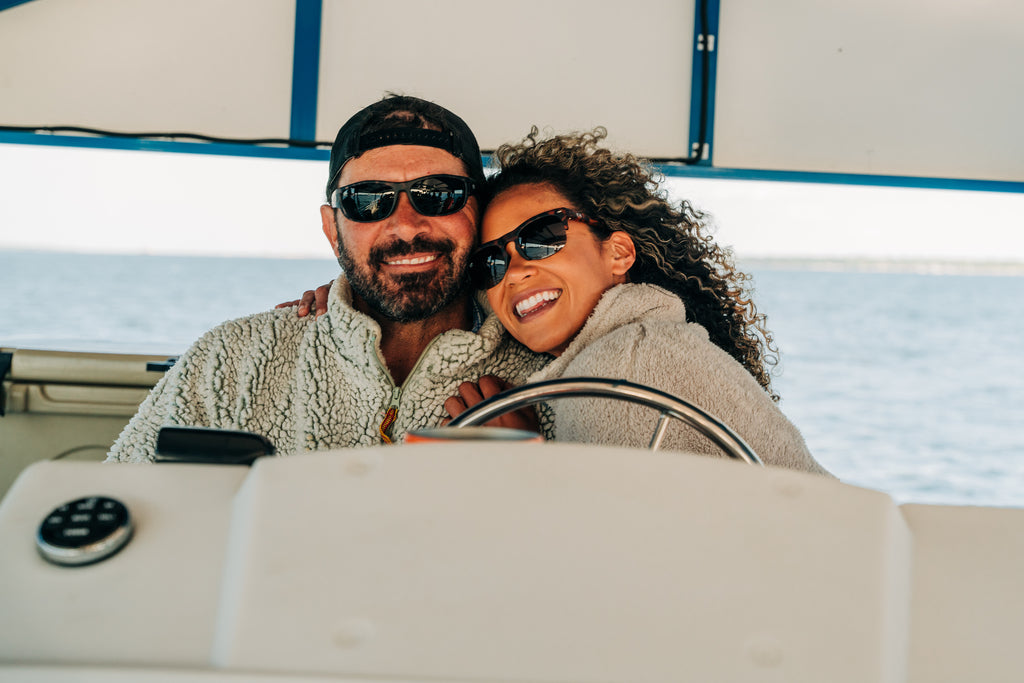Anhingas the “Snake Bird:” A Rheos Namesake
We’ve got a bevy of frame styles for our polarized floating shades, and it can be a bit of an adventure choosing your favorite. We’d like to proudly highlight one of our favorite styles, a mini-rectangular design of sport-fit shades affectionately dubbed the Anhingas. We named this classic, versatile fit after one of the coolest, most adventurous coastal birds on the water. Say hello to the Anhinga (Anhinga anhinga, more scientifically), a true diver, swimmer and master spear-fisher!
A bird of many names and a lot of charisma, the Anhinga is a large diving waterbird native to the coastal regions of the southeast, the Caribbean coast of Mexico and Central America, and Cuba. Commonly called “snakebirds,” these black or dark gray birds can reach three feet in length and have long, heron-like necks and sharp bills used for spearing fish. They’re not hard to spot in the wetlands, marshes, and coastal streams of these regions if you keep your eyes open—especially if they’re sunning themselves open-winged along the water’s edge, as is their habit. You’re also likely to see them swimming in the shallows, though it’s easy to confuse their protruding heads and necks for coasting snakes. Unlike most swimming birds, the heavy-bodied Anhinga swims low in the water, with only their curved necks and dark heads protruding above the surface in a very serpentine fashion. It’s a fascinating sight to behold, if not a bit unsettling at first!

The name “Anhinga” is in fact a native word borrowed from the Tupi people of Brazil. It translates to something along the lines of “devil bird,” or “evil spirit of the woods.” Anhingas acquired this enigmatic title partly from their eerie, devilish-sounding call, as well as from the snake-like sinuous movements of their heads as they glide through the water. Anhingas go by less mystical names as well, including “darters” and “water turkeys.” When on the hunt, they dive beneath the surface, paddle with their feet, and make quick, darting movements towards fish. Their tails fan out wide, resembling the substantial rear feathers of a turkey.

Anhingas, however, are extremely agile, and their wide tails aid in quick underwater maneuverability. With this stealthy aquatic grace and their needle-sharp bills, it’s no surprise that these birds excel at fishing. They meticulously monitor vegetation and submerged debris to find and track fish. They can extend their long necks with incredible speed to spear their prey, and often hunt with their mouths open such that the bottom and top portions of their bills strike as two spears rather than one. Interestingly, they often strike sideways rather than head-on for an added element of surprise. The spear-fishers among us could probably learn a thing or two from these nimble water turkeys!

On top of being excellent swimmers and spear-fishers, Anhingas also take to the air with surprising ease. Much like vultures, they are known for soaring on high-altitude thermals, and can venture up to several thousand feet in the air. It’s unusual for a bird so adapted to swimming and diving to maintain such developed flying abilities, and it is one of the many characteristics that make this bird so fascinating. Also unique from many other diving birds, such as ducks, Anhingas do not possess the oily waterproofing on their feathers that allows for quick drying and shedding of water after submersion. This is the reason for their characteristic open-winged resting behavior, used to expedite the process of drying their feathers and maintaining their body temperatures—and showing off the complex white checkering of their coverts (thick upper wing feathers). Male birds exhibit a red-orange ruff of feathers along their necks, commonly fluffed out as they perch to dry and resulting in the quirky mohawk characteristic of this species. All things considered, these guys are one of the most easily identifiable birds you’ll see in the shallow waters of the coast, and one of the most fun to observe.

If you know what you’re looking for, these birds are pretty easy to find throughout their native range. Because of their hunting style, you’re not likely to see them in wide expanses of open water, as they tend to prefer smaller bays, ponds, streams, and wooded water edges. They’re family-oriented, and if you’re lucky enough to come upon them during breeding season, you’re in for a treat! Males court females with snazzy wing and tail flapping “dances,” and extra-fluffy mohawk displays. Multiple pairs will nest in a single tree, often joined by other species of waterbirds, to make for a crowded, bustling colony of young birds during the summer months.
Definitely keep your eyes peeled for these super cool snakebirds next time you’re adventuring around the coast. And while you’re at it, keep a pair of their namesake shades handy. We’re excited to dedicate one of our best floating sunglasses to these expert water-goers. Now happy birding!
